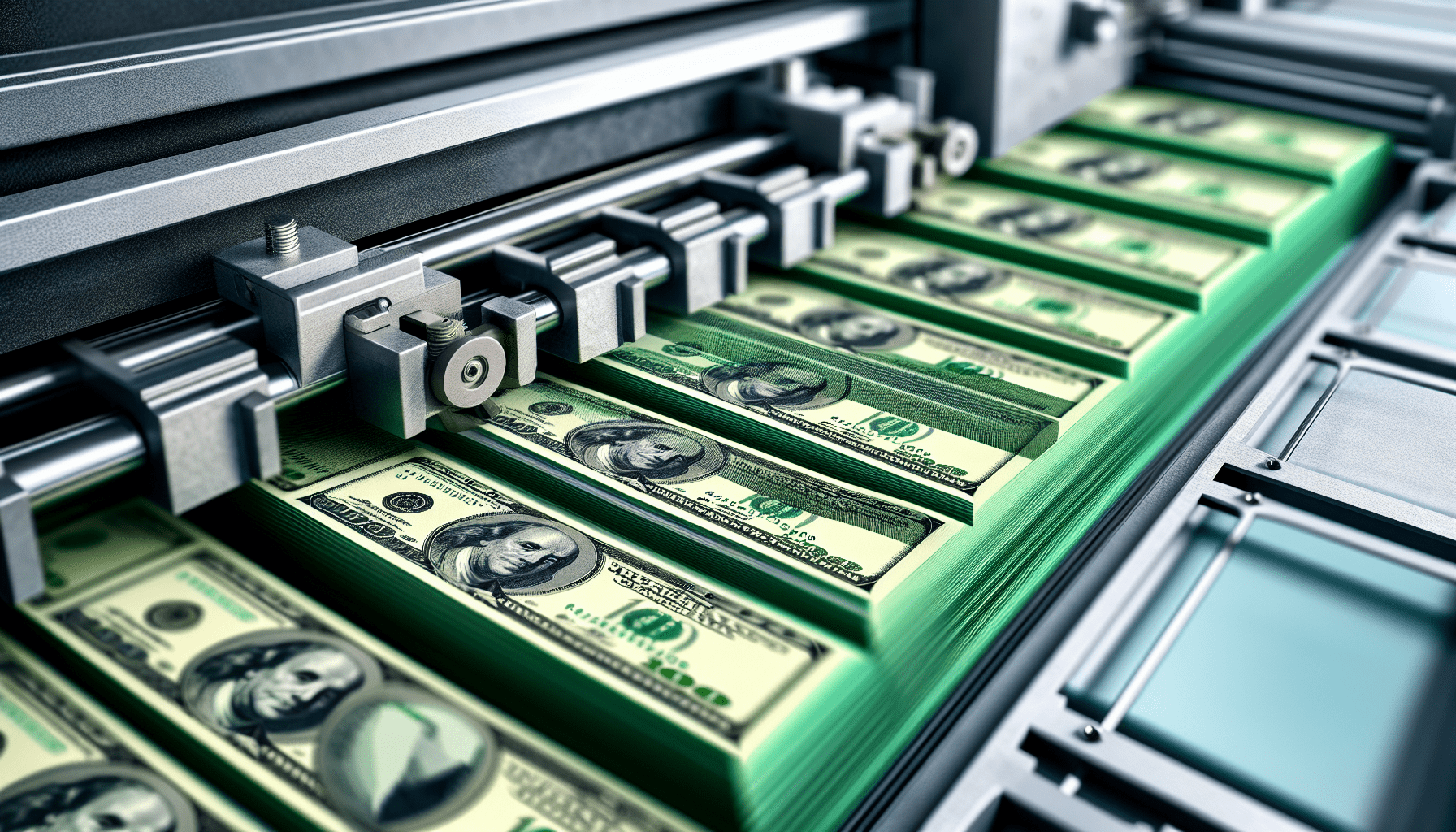Have you ever wondered why the US government doesn’t just print more money to stimulate the economy? It seems like a simple solution at first glance: create more money, distribute it, and boost economic activity. However, the reality is far more complex. Printing more money isn’t a magical fix; it entails intricate economic principles, potential risks, and far-reaching consequences.

What Is Money Printing?
Money printing, also known as quantitative easing (QE) in the modern context, involves the creation of additional currency by a nation’s central bank. The intent is to increase money supply in the economy, stimulate spending, and ultimately spur economic growth.
Traditional Money Printing vs. Quantitative Easing
When people think of money printing, they often envision a literal printing press churning out banknotes. While this method indeed existed in the past, modern monetary policies usually rely on digital money creation and asset purchases.
| Type | Description |
|---|---|
| Traditional Printing | Physical creation of more banknotes, adding them to circulation. |
| Quantitative Easing | Central bank purchases securities (e.g., government bonds) to inject money into the financial system. |
The Mechanics Behind Money Printing
Understanding how money printing works requires comprehension of the interplay between different economic actors, including the central bank, private banks, and the government.
Role of the Federal Reserve
In the United States, the Federal Reserve has the primary authority to manage money supply. It can create money electronically and use these funds to buy financial assets, thus increasing liquidity in the economy.
Banking Multiplier Effect
When the Federal Reserve injects money into the banking system, commercial banks have more funds to lend. This lending multiplies the amount of money in circulation through the fractional reserve banking system.
Government Spending
In theory, the government can use newly created money to fund various programs like infrastructure projects, social benefits, and emergency aid. However, such an approach must be carefully balanced to avoid economic pitfalls.
Potential Benefits of Printing More Money
At first glance, there are apparent benefits to printing more money, especially in scenarios of economic downturns or crises.
Boosting Economic Stimulus
By increasing the money supply, more funds become available for personal consumption, business investments, and government spending. This can lead to heightened economic activity and job creation.
Lowering Interest Rates
Increased money supply often results in lower interest rates, making borrowing cheaper for consumers and businesses. This promotes more spending and investments, further aiding economic recovery.
Debt Relief
For nations burdened by heavy debt, creating more money to finance or refinance debt obligations may seem advantageous. It can help alleviate immediate fiscal pressures.
The Risks and Consequences
Despite the potential benefits, printing more money comes with significant risks and potential negative consequences that could outweigh the advantages.
Inflation and Hyperinflation
One of the primary risks of excessive money printing is inflation—a general increase in prices for goods and services. In extreme cases, this can lead to hyperinflation, a situation where prices spiral out of control, eroding the value of currency.
Loss of Trust and Credibility
When a government resorts to excessive money printing, it can undermine trust in its financial stability and credibility. Investors, both domestic and international, might lose confidence, leading to reduced investment and capital outflows.
Depreciation of Currency
As more currency enters circulation, its value relative to other currencies may depreciate. This devaluation can impact import prices, worsen trade balances, and ultimately hurt the broader economy.
Asset Bubbles
An influx of cheap money can lead to asset bubbles, where the prices of real estate, stocks, and other assets rise to unsustainable levels. These bubbles can burst and create financial crises.
Historical Examples of Money Printing
History provides numerous examples of nations that have faced both the benefits and consequences of printing money. These cases offer valuable lessons on the potential outcomes.
Zimbabwe
Zimbabwe serves as a cautionary tale of hyperinflation. In the early 2000s, the government printed vast amounts of money to deal with economic challenges, leading to inflation rates so high that currency became practically worthless.
Germany (Weimar Republic)
Post-World War I Germany saw similar conditions during the Weimar Republic era. Excessive money printing to pay reparations and debts resulted in hyperinflation, economic instability, and social unrest.
The United States (2008 Financial Crisis)
In response to the 2008 financial crisis, the United States implemented quantitative easing. While this helped stabilize the economy, it has also sparked debates on long-term impacts, particularly concerning inflation and asset bubbles.
Modern Economic Theories and Policies
Contemporary economic theories offer various perspectives on the role and impact of money printing. These help shape the policies adopted by modern governments and central banks.
Keynesian Economics
Keynesian economics advocates for active government intervention in the economy, especially during recessions. This theory supports increased public spending and, in some cases, money printing to stimulate growth.
Modern Monetary Theory (MMT)
Modern Monetary Theory proposes that sovereign nations like the United States can print more money without facing the same constraints as households or businesses. According to MMT, inflation is the primary concern, not solvency, as long as the country controls its currency.
Key Considerations for the Future
Given the intricacies involved, any decision to print more money must consider numerous factors. Here are some key considerations for future economic policies.
Balancing Act
Policymakers must find a balance between stimulating economic growth and maintaining financial stability. Excessive money printing can jeopardize this balance, causing more harm than good.
Monitoring Inflation
Accurately monitoring and controlling inflation is crucial. Central banks use various tools, such as interest rates and reserve requirements, to manage inflationary pressures.
Long-term Strategies
Short-term fixes like money printing may offer temporary relief, but sustainable economic health requires long-term strategies. These can include structural reforms, investment in education and infrastructure, and promoting innovation.
Conclusion
While the notion of printing more money to stimulate the economy seems straightforward, it involves a complex web of economic principles, potential risks, and historical lessons. The benefits of such measures might be appealing, but they come with significant consequences that could ultimately harm the economy. Careful consideration, balanced policies, and long-term strategies are essential for ensuring sustainable economic growth and stability.
So, next time the idea of simply printing more money comes up, remember the intricate dance of economics at play and the importance of thoughtful, measured approaches in maintaining a healthy economy.



